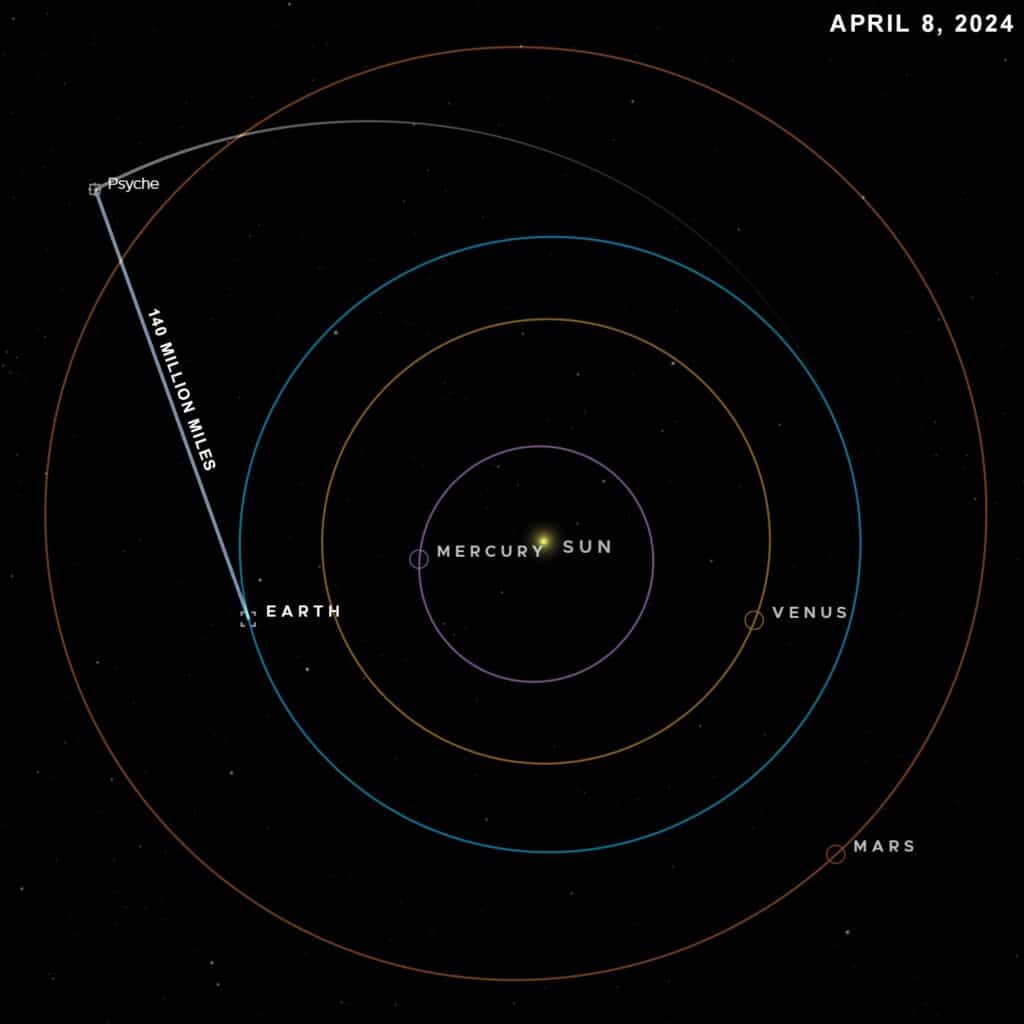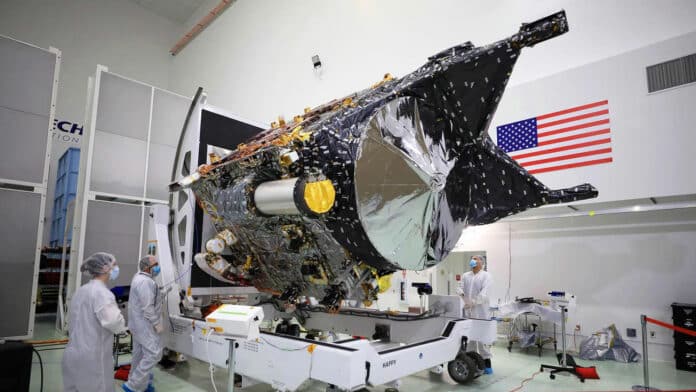NASA’s Deep Space Optical Communications (DSOC) technology demonstration, riding aboard NASA’s Psyche spacecraft, continues to break records. Although the spacecraft doesn’t rely on optical communications to send data, the new technology has proven its capability by sending a copy of engineering data from over 140 million miles (226 million kilometers) away, 1.5 times the distance between Earth and the Sun.
This is a record-breaking achievement that provides a glimpse into how spacecraft could use optical communications in the future. This technology could enable higher-data-rate communications of complex scientific information, high-definition imagery and video, all in support of humanity’s next giant leap: sending humans to Mars.
The spacecraft launched on Oct. 13, 2023, and is now on its way to the main asteroid belt between Mars and Jupiter to visit the asteroid Psyche. Its laser communications technology is designed to transmit data from deep space at rates 10 to 100 times faster than current radio frequency systems used for deep space missions.
NASA’s optical communications demonstration has shown that it can transmit test data at a maximum rate of 267 megabits per second (Mbps) from its flight laser transceiver’s near-infrared downlink laser. This speed is comparable to broadband internet download speeds, making it an exciting development for the future of space communications.
On Dec. 11, 2023, NASA was able to beam a 15-second ultra-high-definition video to Earth from 19 million miles away, which is about 80 times the Earth-Moon distance. The video, along with other test data, including digital versions of Arizona State University’s Psyche Inspired artwork, had been loaded onto the flight laser transceiver before Psyche launched last year.
The spacecraft’s data transmission rate has decreased significantly as it moves farther away. During the April 8 test, the spacecraft was able to transmit test data at a maximum rate of 25 Mbps, which is much higher than the project’s minimum goal of 1 Mbps.

Moreover, the project team successfully tested the transceiver’s optical communications system by transmitting a portion of the same data to the Hale Telescope at Caltech’s Palomar Observatory while simultaneously transmitting the data to NASA’s Deep Space Network via radio frequency channel.
After the launch of Psyche, the optical communications demo was first utilized for downlinking pre-loaded data, which included the famous Taters the Cat video. Since then, the project has shown that the transceiver can receive data from the high-power uplink laser located at JPL’s Table Mountain facility near Wrightwood, California.
In a recent “turnaround experiment,” the project even managed to send data to the transceiver and then downlink it back to Earth on the same night, thus completing a round trip of up to 280 million miles (450 million kilometers). Along with test data, the experiment also relayed digital pet photographs to Psyche and back. Additionally, it downlinked significant amounts of the tech demo’s engineering data to study the characteristics of the optical communications link.
